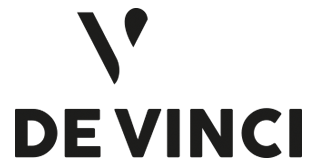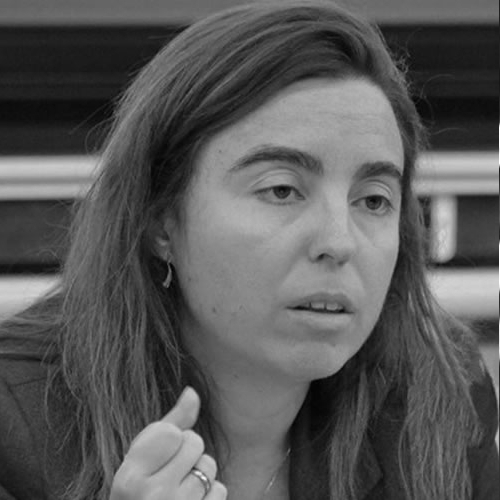@conference{rutgersson_3231,
title = {ShipTRASE, Global shipping: Linking policy and economics to biogeochemical cycling and air-sea interaction},
author = {Anna Rutgersson and Christa Marandino and Denis Booge and Shams El Hajjaji and Rohan Kumar and Nele Matz-Lück and Laura Recuero Virto and Kent Salo and Maxime Sèbe and Fabien Yao},
url = {https://www.ivl.se/english/ivl/project/joint-tap-and-se-conference.html},
year = {2023},
date = {2023-07-01},
booktitle = {Joint TAP and S&E Conference ?2023},
address = {Gotenborg, Sweden},
abstract = {The shipping sector is presently going through a transitional phase with enhanced focus on green shipping. In 2005 emission control areas (ECAs) were implemented established to reduce the shipping emissions of Nitrogen oxides, Sulphur oxides and Particulate matter. In addition, targets are set for reduction of greenhouse gas (GHG) emissions, where the IMO aims for a 40% reduction in GHG emissions per transport work (ton miles) by 2030 and 70% by 2050 compared to 2008 (IMO, 2018). Switching to Liquefied Natural Gas (LNG) or installing exhaust gas cleaning systems such as scrubbers have previously been identified as the most suitable solutions for shipping companies to meet these regulations. However, some concerns have arised for the use of those technologies. Open-loop scrubbers release chemicals in seawater, with potential ecological implications, and LNG releases unburned methane (so-called "methane slip"), which adds to the anthropogenic increase of atmospheric GHG.
There is a need for a holistic evaluation of new fuels and cleaning technologies. This includes understanding of climate and environmental impacts, economic implications, regulatory requirements and technical possibilities. Within the ShipTRASE project we evaluate short- and long term possibilities for cleaning technologies and alternative fuels from a multidisciplinary perspective.
Short-term perspective
Regulations have led to increased use of low-sulfur fuels, but also allows abatement technologies such as scrubbers, which require a separate legal framework. In 2022, guidelines for risk and impact assessments of the discharge water from scrubbers (MEPC.1/Circ.899) was adopted (MEPC, 2022). Although the guidelines have been stepwise improved, they are still only recommendatory in nature (Shi et al., 2023).
Since January 1, 2020, only 0.50% fuel oil sulphur content for non-emission control areas (ECAs) and 0.1% for ECAs and their corresponding SO2/CO2 are relevant. Although the scrubber's air emissions are consistent with the limits set in the guidelines, there is a major uncertainty regarding national regulations on the scrubbers' wash water (discharge) in the sea. The majority of countries do not adopt unified or semi-unified regulations, as in the case of sulphur limits. Scrubbers concentrate ship stack emissions and the most common type, open loop scrubbers, discharges large volumes, typically of acidic and polluted water to the ocean. Wide scale use of scrubber technology may cause problems for sensitive ecosystems.
The results from our incubation experiments show that the addition of scrubber effluent impacts the production of climate relevant biogenic trace gases (i.e. dimethyl sulfide and isoprene). On the one hand, the trace gase concentration is indirectly influenced as the toxicity of the scrubber effluent influences the growth of phytoplankton communities. On the other hand, constituents of scrubber effluent directly react with dissolved trace gases leading to a significant decrease in the ocean concentration and therefore dampen the air-sea gas exchange.
Long-term perspective
In a prospective approach to assess the development of shipping fuel for the Baltic Sea, we have defined scenarios taking into account legal (national and international regulations), environmental and economic aspects (investment costs and fuel prices). Each of those dimensions has been projected thanks to our multidisciplinary consultations, and the final scenarios have been discussed with stakeholders. Figure 1 presents the share of fuel used in the Baltic Sea Region in 2050 in each scenario, and reveals the projected long-term decline of fossil fuels. The availability of alternative fuels is limited, with LNG being the more accessible option. However, technical issues with methane slips raised severe concerns and led to the cancellation of LNG plans at several ports. While methanol bunkering is only available in Kiel, several hydrogen projects are emerging around 21 maritime BSR ports that could provide a better alternative for the long term. Though limited, projects are also emerging for ammonia. Possible breakthroughs of the prototypes of hydrogen and ammonia-fuelled ships open up to meeting 2050 decarbonisation targets with significantly lesser environmental degradations. However, in the absence of tangible alternative fuel infrastructure, the sector encourages closed-loop scrubber discharge facilities, while open-loop scrubbers gradually fade due to the partial ban in seven BSR countries. Until then, supporting strategies adopted in the purview of IMO 2050 targets, such as financial sanctions, should be monitored and implemented judicially. BSR countries need to enforce IMO and EU regulations stringently.
From the legal part, different scenarios will help to adopt the best legal and institutional model to achieve climate neutrality by 2050. The European Climate Law 2021 imposes a mandate to reach zero emission by 2050. Fit for 55 (2022) is clearly including the shipping into the target to achieve climate neutrality.
However, it is not clear on what is the expected legal model that the EU, or its institutions (including its monetary and judicial systems), will employ to achieve that target regarding the shipping industry.
This work was supported by the Belmont Forum with national funding agencies.
IMO, 2018. UN adoption of climate change strategy for shipping. URL: http://www.imo.org/en/MediaCentre/PressBriefings/ Pages/06GHGinitialstrategy.aspx.
Kumar, R and Yau, F. C. Marandino, D Booge, S. Hajjaji, N. Matz-Luck, L. Recuero-Virto, K Salo, M. Sebe, A. Rutgersson (2023). Assessment of Shipping fuel pathways in changing climates.
Shi, Z, S. Endres, A. Rutgersson, S. Al-Hajjaji, S. Brynolf, D. Booge, I.-M. Hassellöv, C. Kontovas, R. Kumar, H. Liu, C. Marandino, V. Matthias, J. Moldanová, K. Salo, M. Sebe, W Yi, M. Yang, C. Zhang. (2023). Perspectives from ship stacks: air pollutant emissions and their impacts on the surface ocean and lower atmosphere. Elementa},
keywords = {},
pubstate = {published},
tppubtype = {conference}
}












